The other day, I received what I considered to be a very good question from a subscriber about circular chord movement in music. If you're familiar with chord progressions at all, you'll know that music has a tendency to move in circular patterns as defined by the "Circle of 5ths". In this article I want to share with you the circular diatonic chord pattern.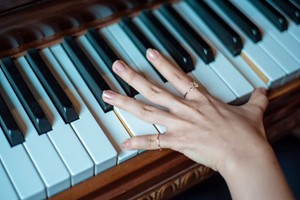
My subscriber's question was to the effect of: If you start out on the 1 chord in any key and proceed though 4th intervals (the way music is naturally inclined to move), you won't cycle through more than one other chord until you're playing chords that are out of the key. This is true. So how does a circular diatonic chord pattern actually work?
First of all, if you're not familiar with the term "diatonic", it simply means "in the key of". For example, here are the diatonic notes in the key of C Major. A diatonic chord progression is based on the notes that are in the key. If any chord has notes that aren't in the key, it's not a diatonic chord. I mentioned the circle of 5ths earlier, and as you can see from the illustration below, the sequence of notes are not in the order of any key of music when starting on the tonic note (first note of the key). Instead they're separated by intervals of 4ths and 5ths.
A diatonic chord progression is based on the notes that are in the key. If any chord has notes that aren't in the key, it's not a diatonic chord. I mentioned the circle of 5ths earlier, and as you can see from the illustration below, the sequence of notes are not in the order of any key of music when starting on the tonic note (first note of the key). Instead they're separated by intervals of 4ths and 5ths.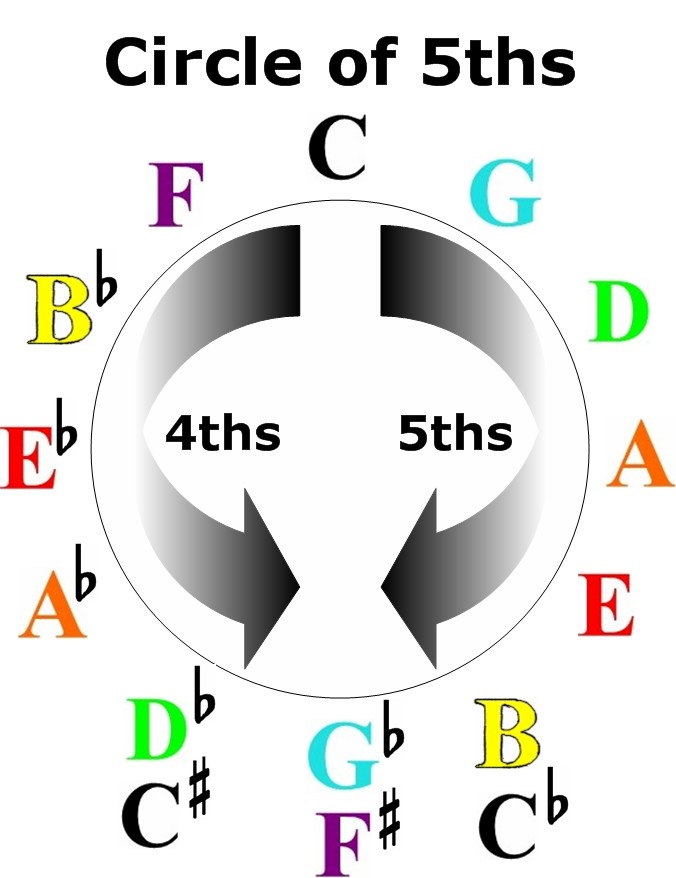 As you can see from the illustration above, that 5th intervals move clockwise around the circle and 4th intervals move counterclockwise. It's the counterclockwise direction of 4th intervals that I want to focus on today. This is the more common interval that chords move when they're moving circularly.
As you can see from the illustration above, that 5th intervals move clockwise around the circle and 4th intervals move counterclockwise. It's the counterclockwise direction of 4th intervals that I want to focus on today. This is the more common interval that chords move when they're moving circularly.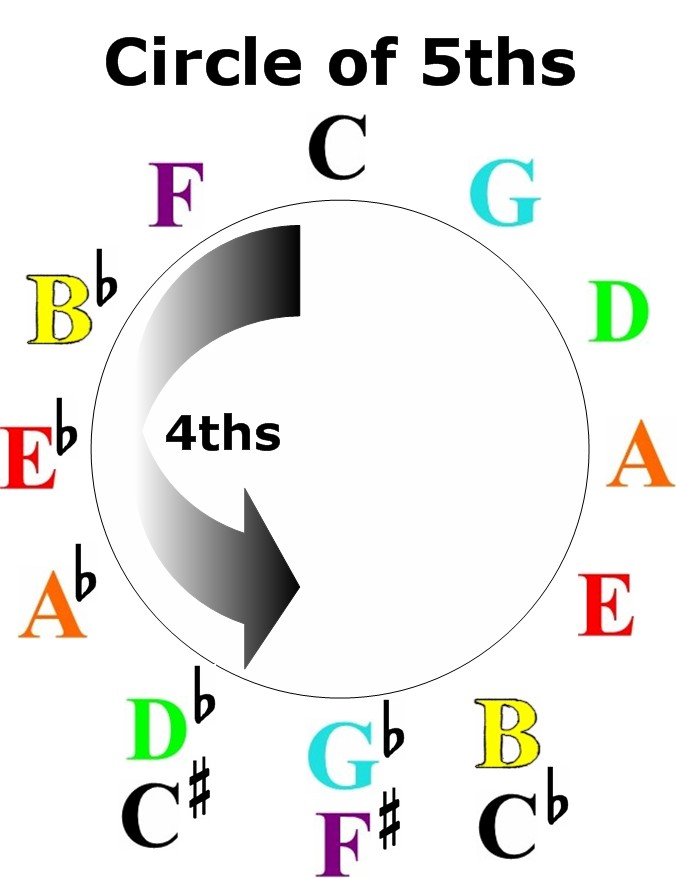
As my subscriber noted in his question, you can see that if you're moving from C to F on the circle, these are the only two notes you will cycle through until you get to B flat which is a non-diatonic tone. You would then be out of the key of C Major. However, there is a circular diatonic chord pattern that exists in the key of C Major (and of course every other Major key).
In order to cycle through this circular diatonic chord pattern, you don't start on the tonic chord (the 1 chord). In our example the 1 chord is C Major. So we're going to start on the 7 chord which is B diminished. This way, we can move in 4th intervals and cover every diatonic chord without moving out of the key.
To make our diatonic chord progression more satisfying, we'll add Major and flatted 7th tones to them. So let's get started with our circular diatonic chord pattern.
Our first chord is B minor 7. Even though this is diatonically a diminished chord, we'll omit the flat 5th and just play a minor chord as well as the rest of the chords in our pattern. 
Next we move a 4th interval to E to create our E minor 7 chord. Our next chord is A minor 7
Our next chord is A minor 7 Then we move another 4th interval to D minor 7
Then we move another 4th interval to D minor 7
As we move to our next chord, notice it isn't a minor chord as our previous diatonic chords. Here we have a G7 chord. This will then take us back to the tonic chord which is C Major 7.
This will then take us back to the tonic chord which is C Major 7.

But we're not done yet. We still have one more 4th interval to go to complete all of the diatonic chords in the key of C major. Here, we'll cycle to F Major 7.
If the diatonic chords that I've covered look suspiciously close to a real chord progression, it is. It's actually a 7-3-6-2-5-1-4 chord progression. Even though there are real songs that use it in it's entirety, it's not very common to use a circular progression this long. It's more common for circular chord patterns to be shorter before moving to a non-circular interval.

The purpose of demonstrating this very long circular progression is so you'll be more fluent with it when playing real songs. This of course can also be applied to any key of music. The circle of 5ths does of very good job of showing us how the sequence works in any key as long as you know how the pattern works.
As you can see, we have C at the top of the circle. If we count seven notes counter-clockwise from C, we find the 7th note in the key of C Major (B). From there we can see the 7-3-6-2-5-1-4 chord progression in sequence.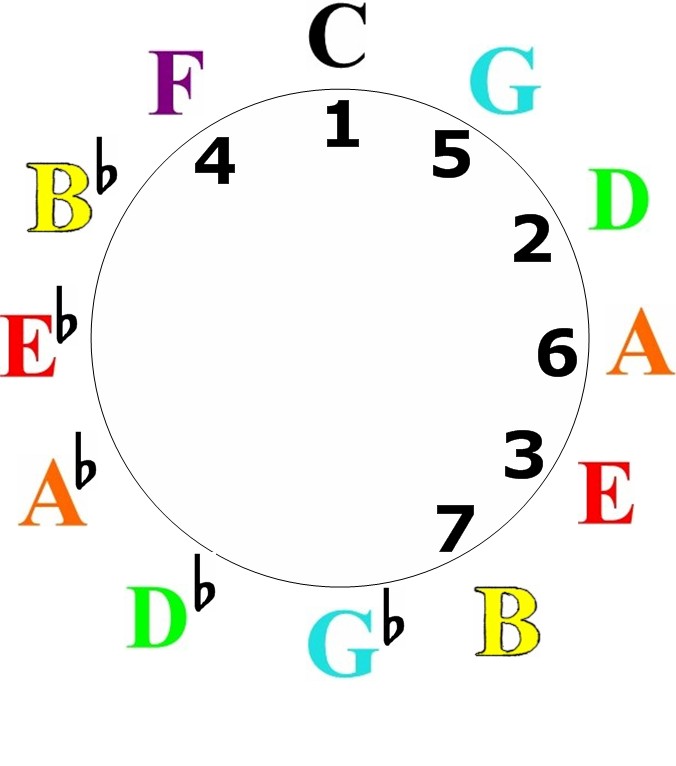
Now, let's look at the 7-3-6-2-5-1-4 chord progression in the key of G Major.
First, let's find G on the Circle. Then we count seven notes counter-clockwise from G and we find F sharp. This is the 7th note in G Major.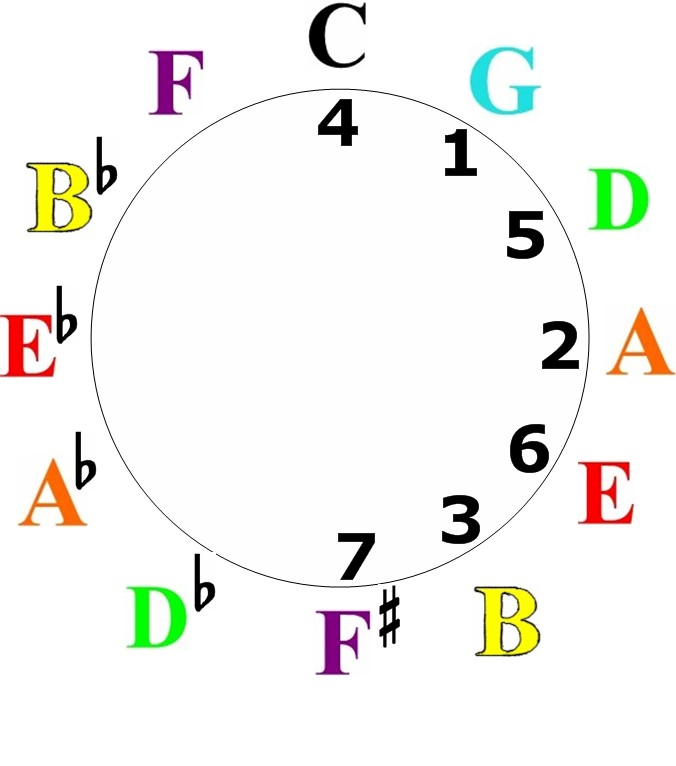 Just as in the key of C Major, each each subsequent note moving counter-clockwise shows us our circular diatonic chord pattern. Again, the 7-3-6-2-5-1-4 chord progression (in G Major).
Just as in the key of C Major, each each subsequent note moving counter-clockwise shows us our circular diatonic chord pattern. Again, the 7-3-6-2-5-1-4 chord progression (in G Major).
Even though the circle of 5ths is an excellent learning tool, don't neglect learning these tones in every key of music. The real key to doing so is to learn the number system. When you do, you can play songs in any key without getting stumped on chord progressions.
For a limited time, the Color Quiz audio training course for the numbering system in all 12 keys is being offered as a free bonus with the Color Score Learning System. It's the only audio course available to help you learn the number system. You can find out about it here.
Until next time, Go Play!
Greg Lee
Latest posts by Greg Lee (see all)
- What is a minor/Major 7 Chord? - October 26, 2023
- 7 Chord Substitutions that Professionals Use - October 19, 2023
- 5 Simple Chord Tricks to Sound Amazing - October 5, 2023



